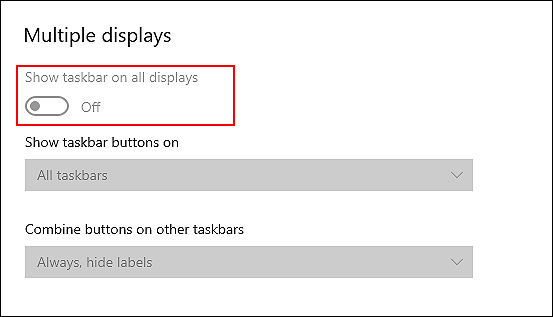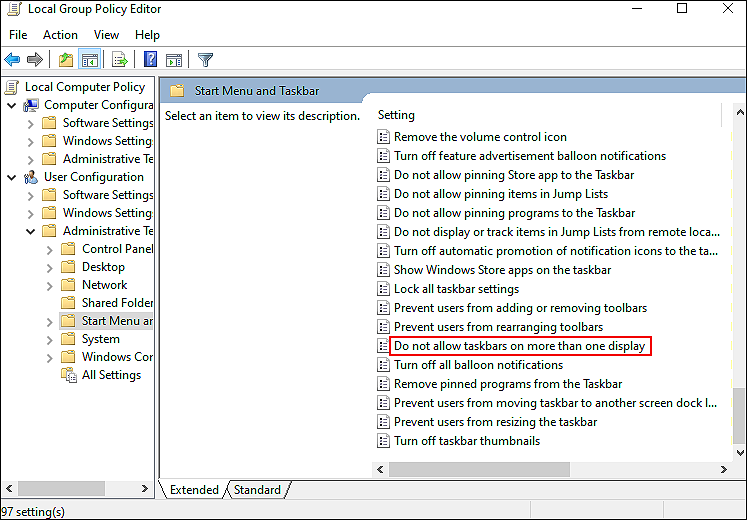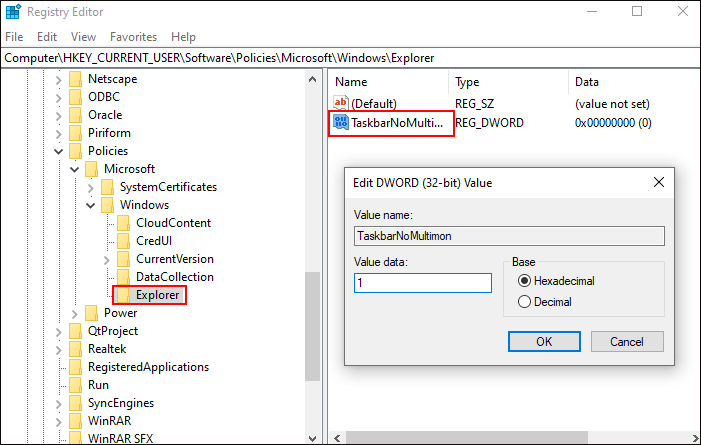Do you want to hide Taskbar on multiple displays in Windows 10 to keep your second monitor uncluttered?
The taskbar is one of the most beneficial features of Windows. It maximizes your productivity by displaying a list of running applications, open windows, and tasks so you can switch between them quickly.
However, there can be situations where you would want to hide the Taskbar from your screen. For instance, when you have multiple monitors connected to your computer, and you want to maximize the available space on one of them.
Luckily, Windows allows you to do so and if you are reading this right now, it is fair to assume that you are in search of ways to hide Taskbar on multiple displays in Windows as well.
Fortunately, you are in the right place because we will demonstrate the steps to hide a taskbar on multiple Windows in this guide in detail.
Let’s get started.
1. Use Windows Settings.
If you want to hide the taskbar on multiple displays in Windows 10, the easiest way to do so is via Windows Settings.
Windows Settings contains a specific taskbar feature that can be enabled and disabled according to your preferences.
Here is all that you need to do:
- Press Windows + I keys together on your keyboard to launch the Settings window.
- Click on Personalization and select Taskbar from the left panel.
- In the Taskbar window, scroll down to locate the Multiple displays option.
- Toggle off the Show taskbar on all displays option.

That’s it. This should hide the taskbar on multiple displays in Windows 10.
2. Use Group Policy Editor.
Group Policy is an administrative-level feature that allows advanced users to make changes in their operating system according to their preferences.
If Windows Settings did not help you perform the desired task, then try using Group Policy Editor instead. However, we recommend being very careful while performing the steps mentioned below as even a minor error can cause serious issues within your operating system.
Here is what you need to do:
- Open a Run dialogue box by pressing Windows + R keys simultaneously.
- Type ‘gpedit.msc‘ in the text field of the dialogue box and hit Enter. Doing so will launch the Group Policy Editor.
- Inside the newly launched window, navigate to the location mentioned below.
User Configuration\ Administrative Templates\ Start Menu and Taskbar\
- In the right pane, locate Do not allow taskbars on more than one display and double-click on it.

- Now select Enabled and click on Apply to save the changes.
- Finally, check if doing so hid the taskbar on multiple displays in Windows 10.
Hopefully, making changes in the Group Policy Editor will help you perform the desired function.
3. Try Using CleanMyPC.
Our PC sometimes fails to perform certain actions and displays frequent errors when running certain programs. You may experience this problem due to the junk, unwanted system files that not only take up space on your PC but also affect its performance significantly.
In case you have been facing the same problem, now would be the right time to clean your PC with an efficient PC cleaner. If you are looking for a reliable PC cleaner, we highly recommend CleanMyPC.

With CleanMyPC, you aren’t just getting a PC cleaner; you are getting a variety of system maintenance tools that can do everything from cleaning your Windows Registry to protecting your online privacy.
Download CleanMyPC now to make your PC run faster!
4. Use Windows Registry.
Like the Group Policy Editor, Windows Registry too allows the users to control their operating system according to their requirements.
If you found the method of hiding the taskbar via Group Policy Editor difficult, then try doing it via Windows Registry. Information in Windows Registry is stored in the form of Registry keys and in this method, we will be modifying the relevant keys to make the desired changes.
Here is what you need to do:
- Open a Run dialogue box by pressing Windows + R keys simultaneously.
- Type ‘regedit‘ in the text field of the dialogue box and hit Enter. Doing so will launch Windows Registry.
- Inside the Registry window, navigate to the location mentioned below.
HKEY_CURRENT_USER\Software\Policies\Microsoft\Windows\Explorer
- If you cannot locate the Explorer key, right-click on the Windows key and select the New > Key option.
- Rename this key as Explorer.
- Now right-click anywhere in the right pane and choose the New > DWORD (32-bit) Value option.
- Name this newly created value as TaskbarNoMultimon.
- Double click on TaskbarNoMultimon and under Value data, type 1.

As simple as that!
If you want to enable this feature in the future, simply follow the steps mentioned above again and in the 8th step, type 0.
This wraps up our guide on hiding taskbar on multiple displays in Windows 10. We tried walking you through all the steps in detail and hope that one of the methods did the trick for you. In case you have any questions regarding the troubleshooting methods, please let us know in the comment section below.
If this guide helped you, please share it. 🙂





